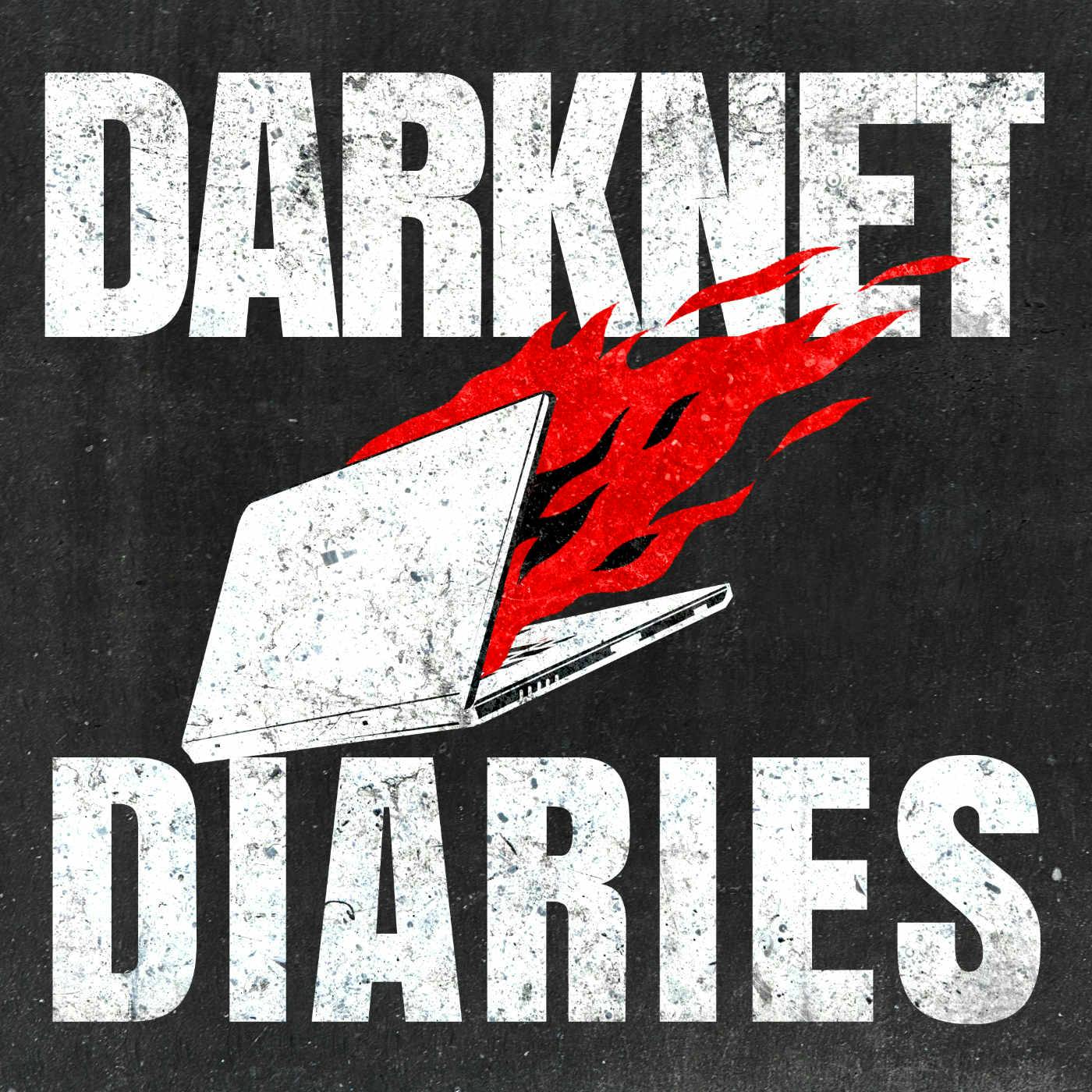
Fully Modulated
Fully Modulated is a broadcast engineering podcast discussing radio technology, broadcasting systems, and everything broadcast radio. Host Tyler Woodward, a professional broadcast engineer, explores radio engineering, transmission technology, emergency broadcast systems, broadcasting equipment, radio formats, and on air operations.
From AM/FM radio technology to digital broadcasting, RF engineering, radio programming, and station operations, each episode features technical discussions about how broadcast radio really works. Essential listening for broadcast engineers, radio professionals, on air talent, tech enthusiasts, and anyone interested in radio technology and broadcasting infrastructure.
Fully Modulated is an independent podcast, not affiliated with or endorsed by any station, media company, or network. All opinions are solely my own.
Fully Modulated
Local Heroes: The County Emergency Managers Who Keep You Safe
Ever wondered who actually pushes that button sending jarring alerts over your radio and phone? The answer might surprise you - it's usually not someone in Washington, but your neighbors working in county emergency operations centers.
Most county EOCs aren't glamorous command centers but rather ordinary rooms in courthouse basements or sheriff's departments. Inside, dedicated professionals monitor weather radar and emergency feeds, making critical decisions about when to interrupt your favorite show with potentially life-saving information. They use IPAWS (Integrated Public Alert and Warning System) to create standardized messages that flow through a complex network of broadcasters and wireless carriers.
What's fascinating—and concerning—is the dramatic disparity between different counties' capabilities. While major metropolitan areas maintain fully-staffed operations with modern technology, many smaller communities rely on a single emergency manager carrying a laptop everywhere to ensure they can respond after hours. Some counties aggressively use alerts to protect residents, while others remain overly cautious, fearing public backlash from "false alarms." This creates a patchwork of inconsistent practices across the country.
Behind every alert is an intricate relay network outlined in state EAS plans. Local Primary stations serve as the main distribution points, while State Relay stations bridge communication between state emergency centers and broadcasters. Despite increasing automation, human relationships remain crucial—engineers and emergency managers must coordinate regularly to ensure systems work when needed most. When one pathway fails, personal connections often determine how quickly backup plans activate.
The challenges facing local emergency alerting are substantial: outdated equipment held together with creative fixes, insufficient staffing in smaller communities, unreliable internet connections, and the delicate balance between alerting promptly and avoiding alarm fatigue. Yet dedicated professionals continue working with what they have to keep their communities safe.
Want to learn more or share your own alert experience? Email tyler@fullymodulated.com or follow the link in the show notes. And if you found this information valuable, please follow and review the podcast wherever you listen.
If you enjoyed the show, be sure to follow Fully Modulated and leave a rating and review on Apple Podcasts or your favorite podcast app—it really helps more people discover the show.
Fully Modulated is an independent podcast and website, not affiliated with or endorsed by any station, media company, or network. All opinions are solely my own.
Have you ever wondered who actually pushes the button to send those jarring alerts over your radio or your phone? Here's a hint it's usually not someone in Washington. Today we're pulling back the curtain on the county emergency managers and the state teams who decide when to hit that big red send button Music. Hey, I'm Tyler Woodward, a certified broadcast networking technologist from the Society of Broadcast Engineers. I'm a broadcast engineer based in the Midwest and this is Fully Modulated, where signal meets podcast. So far, we've spent a lot of time talking about big national pieces of the emergency alert system, like FEMA, the FCC and PEP stations. But EAS isn't just a federal operation. Isn't just a federal operation. In fact, the alerts that matter most to you tornado warnings, evacuation orders or missing children often start in your backyard. Today we'll talk about how state and local emergency managers decide when to issue an alert, how those messages move through the relay networks and why your county's approach might be very different from the one next door. But let's get the disclaimer out of the way first. Fully Modulated is an independent podcast and website. It is not affiliated with, endorsed by or represents any radio or television station, media company or broadcast network. All opinions expressed are solely those of myself.
Tyler:Most of us have probably imagined the emergency alert system as this big faceless federal machine, some bunker somewhere with a giant map on the wall. Bunker, somewhere with a giant map on the wall, full of people in uniform waiting to hit that big red button. But the reality is usually a little more closer to home and, honestly, a lot less glamorous. Your county emergency operations center, or the EOC. It's often a pretty ordinary looking place. Maybe it's in the basement of the county courthouse or a side room at the sheriff's department. Inside you'll find a few desks, computer screens showing weather, radar, emergency feeds and maybe a big binder or two with protocols for every imaginable scenario. Eocs are responsible for coordinating all kinds of emergencies Flooding winter storms, wildfires, hazardous material spills and even public health crises.
Tyler:When it comes to issuing alerts, these teams are often the first line of defense. They decide whether something rises to the level of an official warning or remains an internal advisory. Let's say, a severe thunderstorm is moving in, the National Weather Service might issue a severe thunderstorm watch and the EOC starts monitoring things a little more closely. If the storm starts showing any rotation, meaning it could spawn a tornado, someone at the EOC has to decide. Do we activate the sirens, do we push an alert out to people's phones or do we send an EAS message that interrupts radio and television? To do this they use a secure system called IPAWS, the Integrated Public Alert and Warning System. Ipaws is like a hub that connects everything the emergency alert system, wireless emergency alerts, noaa, weather radio and others. Through IPAWS, authorized officials can create a common alerting protocol or CAP message. That's the format that carries all the details what kind of emergency, where it's happening, when it expires and any instructions for the public.
Tyler:Here's where things get a little messy. Not every county has the same level of access or capability. Bigger metro areas might have a dedicated staff member on duty 24-7, trained to issue alerts quickly. However, the smaller counties often have a much smaller team. Sometimes it's a single emergency manager who's also juggling other responsibilities. I've talked to emergency coordinators who admitted they have to carry a laptop with them everywhere so they can log into iPulse from home if something happens after hours.
Tyler:Some counties have modern cloud-based alerting dashboards with templates and automatic geo-targeting. Others rely on older desktop software or, in rare cases, still pass information by phone to the state, eoc or a neighboring county to issue the alert on their behalf and when you're relying on someone else's system, that adds precious minutes of delay. One Royal Emergency Manager told me Our ability to get alerts out to the public isn't just about software. It's about who's here when the storm hits. And that stuck with me, because even the best tools can't help if no one's available or authorized to use them, or even trained.
Tyler:Then there's the issue of policy and confidence. Some counties are much more aggressive about using EAS and wireless emergency alerts because they want to make sure no one misses a life-threatening situation. Others are cautious, sometimes too cautious, because they're afraid of backlash if they over-alert and people complain about the false alarms. All this means there's a huge variation in how often alerts are issued and how much information they contain. One county might send out multiple updates during a weather event, while the county next door stays silent. That inconsistency can confuse the public and it can also frustrate broadcasters who are trying to relay timely, accurate information.
Tyler:At the end of the day, the emergency alert system starts with the people people making judgment calls, often under immense pressure, with imperfect information, and in many counties those people are doing it with limited resources, outdated equipment and not enough hands on deck. It's a huge responsibility and most of them do it because they care about their community and want to keep people safe. So next time you hear an alert break out into your favorite show, remember it probably wasn't a federal office. It was your neighbors down at the EOC working with what they have to get you the information you need. Once that alert is created, whether it's for a tornado, a hazardous spill or a missing child, it has to get from the county or state system into the ears and eyes of the public. That's where the relay network comes in, and this part is, frankly, more complex than people realize. Every state has what's called a state EAS Plan. It's a document, sometimes hundreds of pages long, that lays out in detail exactly how alerts are supposed to flow, who's responsible for monitoring which sources, which stations rebroadcast which signals and what equipment is required and how tests should be conducted.
Tyler:At the core of this network are the LP1 and LP2 stations, local primary stations. Lp1 stations are the main entry point for alerts in a given area. They monitor a combination of sources, including national feeds from FEMA, state-level feeds and sometimes direct connections from emergency offices. Lp2 stations well, they serve as the backup in case the LP1 is off the air or fails to receive and relay the message. Then there's the state relay or SR stations. This is where my work comes in. I currently engineer SR stations that act as bridges between the state emergency operations center and all the LP stations across the state.
Tyler:Sr stations typically monitor the FEMA, pep stations, those high-powered primary stations that originate the national alerts, and also state-level alerting sources. Some states also designate SR stations to originate their own messages, like evacuation orders or AMBER alerts that need statewide coverage. Imagine it like a giant chain of dominoes the EOC creates the alert, pushes it in the IPALs, the state relay picks it up, retransmits it over a designated frequency. Lp1 stations then monitor that and rebroadcast it to the other local stations in their region. Each station down the chain monitors assigned sources to ensure redundancy. If one fails, another is supposed to catch it. But like any chain, it's only as strong as its weakest link. That's why coordination is essential.
Tyler:Some states have formal EAS committees, groups of broadcasters, emergency managers, cable operators and state officials who meet quarterly or at least annually to review performance, conduct tabletop exercises and update procedures. These meetings are usually where you find out about monitoring assignments that need changing or discovering that an LP1 might have upgraded their equipment and it might affect how they relay In other places. It's more informal. Maybe there's an email list or a group chat where engineers can flag issues like receivers going down, audio quality problems or confusion over the latest cap configuration. I've seen states where a single engineer or a public safety official serves as the de facto coordinator, fielding questions and keeping everyone on the same page.
Tyler:From the broadcaster's perspective, maintaining that relationship with emergency managers is critical. You want to be confident that when the EOC issues a message, you'll receive it promptly and clearly, and they need to trust that you'll rebroadcast it accurately without unnecessary delays. I can think of plenty of examples where this coordination made a huge difference. During a tornado outbreak a couple of years ago, one of the LP1 stations I worked with lost the primary monitoring receiver due to a lightning strike Because they had a secondary path through an SR station. They were still able to get the alerts out with only a few seconds of delay. That backup plan and the relationship behind it probably saved lives that night. It's easy to forget how EAS relies on human connection, especially in the age when we assume everything is automated, but a big part of my job is still picking up the phone calling the county EOC or emailing other engineers to sort out little issues before they become big ones. So when you think about how an alert gets from the county laptop to a radio in your car, remember it's not just servers and satellites, it's people, protocols and a lot of teamwork.
Tyler:Let's talk about four ways you can strengthen your local alerting. Number one know your plan. If you work in broadcasting, get familiar with your state EAS plan. It's usually online somewhere. Number two make sure you test often, even if you're confident your gear works, test. Uncover little surprises like outdated monitoring assignments. Number three build relationships. Meet your local emergency managers before there's a crisis, exchange phone numbers. Learn their process. Number four stay updated Software and IPAL certificates. They expire. Make sure your systems are current so you're not scrambling during an activation. Now my favorite part Listener Q&A.
Tyler:Here's a question I get a lot why do some areas send a lot of alerts and others almost never use EAS? Great question. Part of it is local policy. Some agencies are more cautious about using EAS because they don't want to cause unnecessary panic. Another factor is staffing and training. If a county doesn't have a full-time emergency management team, there may be fewer alerts simply because there's less capacity to monitor and issue them. That's why you see such a patchwork across the country.
Tyler:If you're a broadcaster, the best thing you can do is stay connected to your local authorities, so you know what to expect. Even in the best case scenario, local alerting comes with real obstacles. Some are technical, some are procedural and some that are just plain human. First, there's funding. Yeah, the money. Many counties and smaller broadcasters they're operating on shoestring budgets. Updating alerting software costs money. Replacing old receivers and encoders costs money. Training staff on how to use IPOS or maintain EAS gear takes time, and well, time is money too. I've visited stations where EAS equipment was over a decade old and in some places it's still working fine, but in others it's held together by spare parts and well creative fixes. That might be okay on a normal day, but when there's a real emergency, you don't want to be left wondering if the encoder will fire correctly, be left wondering if the encoder will fire correctly. Then there's staffing the human element. A lot of smaller counties don't have a full-time emergency manager.
Tyler:The person who's authorized to issue an alert might be the sheriff or the county administrator or the 911 director. If they're not available when a crisis hits, the alert might be delayed or not issued at all. Even when the person is available, they may be hesitant to act without clear confirmation of the threat. Another issue is public perception. False or poorly worded alerts can cause panic or erode trust in the public. You probably remember the false missile alert in Hawaii a few years ago. It was a classic example of how one bad message can damage the confidence in the whole system. Ever since, a lot of agencies have become more conservative about issuing alerts, sometimes to the point where they don't send anything when they probably should.
Tyler:And let's not forget the infrastructure challenge In smaller areas. Internet connections can be unreliable. A county might lose their connection to IPALs during a storm just when they need it the most. Some stations rely on over-the-air monitoring of LP1s that can fade out or become noisy. Even the telephone lines used as backup can be vulnerable to outages.
Tyler:One EAS chair I interviewed told me quote you can have all the technology in the world, but if people don't trust each other or don't know who to call, it falls apart. I think about that a lot, because the emergency alert system is built on relationships. Trust between emergency managers, broadcasters and the public is glue that holds it all together. That's why investing in training, modern equipment and clear communication protocols is also important, and why it's critical for broadcasters and emergency managers to meet on a normal basis, not just when something goes wrong, because when the pressure is on, you don't want to be scrambling to figure out who has the keys to send the message.
Tyler:Today, we pulled the lens in to look at the unsung heroes of EAS the state and local teams making the real-time decisions to keep people safe. Next time we're going to zoom back out and talk about what's holding EAS back and how it can get better. From outdated equipment to evolving threats, there's a lot to tackle. If you've got a story about an alert good or bad I'd love to hear it. You'll find the link in the show description where you can text in your thoughts, or you can email me directly, tyler at fullymodulatedcom, and if you enjoyed this episode, take a second to follow or leave a review. Wherever you're listening Apple Podcasts, spotify, iheartradio, youtube wherever you're at Leaving a review or a rating helps others find the show. Fully Modulated runs on curiosity and modulators like you. If you want to help keep the lights on, head over to fullymodulatedcom to become a modulator today. Thank you.















